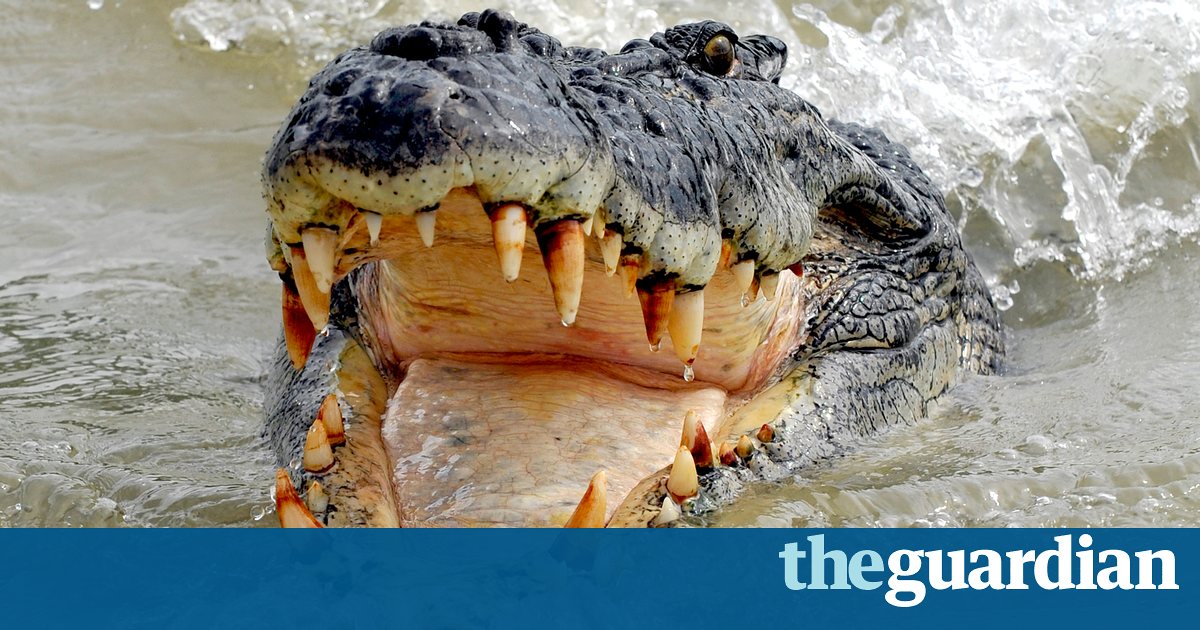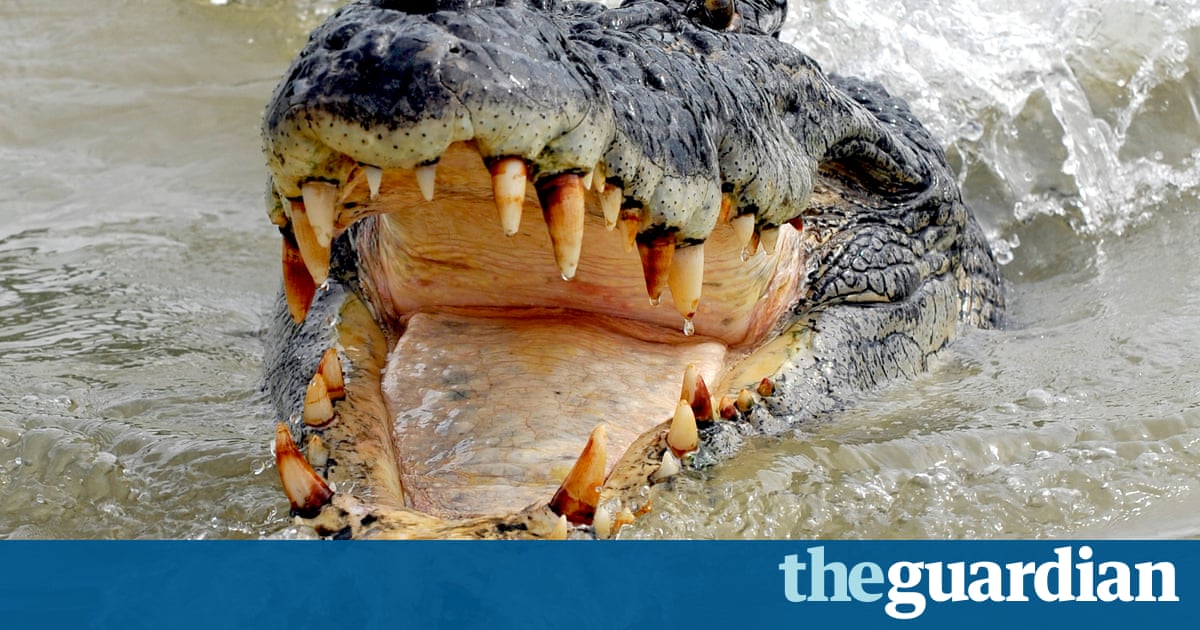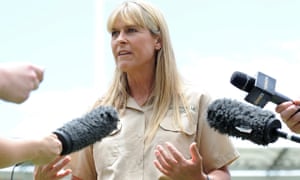Welcome to crocodile country: the remarkable comeback of Australia’s Jaws of the north

Calls for culls always surge after attacks by salties but its their habitat not humans that will decide their numbers

For the people of Australias tropical north, a wary coexistence with crocodiles is a fact of life.
Protected for more than four decades after being hunted to near extinction, the ancient reptile on the credible numbers that are available has staged a remarkable recovery.
In the Northern Territory there are now as many as 100,000 saltwater crocodiles, up from just 3,000 in 1971. There are similar estimates in neighbouring Queensland but the true population will not be known until the first systematic government survey is completed over the next three to five years.
With that resurgence has come inevitable reminders that in natural settings people and crocodiles share, the formers place at the top of the food chain can be an illusion.
Keith Saalfeld, a principal scientist with the NT environment and natural resources department, says it is worth noting that crocodiles, although deadly, are one of the laziest animals on the planet.
Everything for them is about how much energy it costs to do something for what it gets in return, he says.
Its not uncommon to see one sitting on the banks of a river with its mouth open, waiting literally for a fish to swim inside their mouth.
Crocs are a stalk-and-ambush predator They dont go chasing things like a cheetah. They hide and sneak up very carefully and wait and wait until whatever theyre after finally moves within their range of grab.
Official figures record 29 known deaths across the Top End since hunting was outlawed: 21 in the NT since 1974 (including four in 2014) and eight in Queensland since 1985.

The impact of fatal crocodile attacks arguably lies as much in their inherent horror as their frequency. Highly publicised coronial inquiries into two crocodile attacks in the NT last year heightened community fear.
Lanh Van Tran was taken by a 4.5-metre crocodile from the banks of the Adelaide river in front of his wife. Two months earlier, a 4.7-metre saltie latched on to the outstretched arm of Bill Scott, an experienced fisherman who had sought to steady himself after the creature had rocked his boat on a billabong.
Until this year the last fatal attack in Queensland was in 2009 when five-year-old Jeremy Doble was taken by a crocodile in front of his older brother on the family property on the Daintree river in the states north.
Then last May, a tourist, Cindy Waldron, 46, was arm in arm with a friend on a moonlight walk through shallow water at Thornton beach, near the Daintree rainforest in north Queensland, when a crocodile struck.
Such cases invariably revive calls for protections to be scrapped in favour of the old lethal approach. Culling and even safari hunting will restore humans rightful place as apex predator amid an explosion in crocodiles, some argue.
The NT and federal governments the latter overseeing laws that protect crocodiles tend to humour these calls and then reject them. They bow to expert advice from the likes of Saalfield, who says short of wiping out crocodiles entirely waterways could never be considered safe.
What we currently believe is that a cull is not going to have a great deal of impact in terms of making us able to say its safe to go swimming in that particular area, he says.
In Queensland, the state opposition flirted briefly with the idea of culling before ruling it out after being told to grow a spine by the environment minister. That was immediately after opposition from the likes of Terri Irwin, wife of the late Crocodile Hunter Steve, whose famous handle belied his staunch support of the species protected status.
The most prominent calls for culling can often be traced to the same source. Bob Katter, the veteran independent federal MP from north Queensland, routinely makes a colourful case. Last month he accused Terri Irwin of being disconnected from the world of reality.
I dont care if shes St Gabriels mother, were being eaten and ripped to pieces, he said.

Katter claimed Indigenous Australians had historically kept croc numbers in check by harvesting their eggs. If you are a respected naturalist you would know that this was the territory of man, not the territory of crocodiles, he said.
In the closing months of 2016, the Queensland environment department began investigating three cases of people in the north reportedly trying to illegally catch crocodiles by baited fishing lines.
The environment minister, Steven Miles, slammed the reported behaviour as frankly unbelievable and seriously life-risking.
One of the alleged cases involved someone seemingly trying to bolster their social media presence.
Calls for crocodiles to be killed are notably absent among families of recent victims. In a powerful message at a public meeting in Port Douglas last month, Steve Doble invoked the deaths of his son and of Waldron to argue against crocodile culls.
I would like everyone to respect the fact that we lost loved ones because of a mistake made by human beings, he said. Stop always looking at the wildlife and saying its their fault. We are land-based creatures. If we dont go in their water it wont happen.
The family of Waldron had the same attitude after of her death, says Julia Leu, the mayor of Douglas shire council.
It was dreadful and we really felt for them, she says. And even they werent calling for any culls. They just acknowledge it was just a really sad event and a lack of judgment.
It is understood Waldron was warned three times about a crocodile that had been shadowing a tour boat off the beach on the morning of her death.
It was the third recorded death in the Daintree region, more than anywhere else in Queensland in living memory. And yet the idea of people swanning in paying $30,000 just to knock off a few crocs was equally horrifying to locals, Leu says.
We acknowledge the fact we live in crocodile habitat, she says. There are classic dos and donts. No one in their right mind would swim in the Daintree river. You certainly wouldnt go dipping late at night in any sort of murky waters. For a long time, any parent with children has been very, very wary.
Still, more can be done to improve safety, with more signs and brochures to warn tourists in particular, Leu says. Anecdotal evidence is that more crocs are cropping up in places they havent been seen before, including popular beaches. We dont know the reasons, she says. Is it hotter? Is it because of a change in climate?
Crocs that pose a danger should be promptly removed, says Leu, which is not always the case when environment department officials are responding from more than 100km away in Cairns.
Douglas shire council wants the state government to allow trained Indigenous rangers and other locals in remote areas to share that responsibility.
The local council also wants to trial hazing. It sounds like a school bullying ritual, but is the term for strategic harassment of crocs to discourage them from haunting populated areas. This could include the use of rubber bullets to stun them.
But there is little public appetite in croc country for the lethal approach, if a Queensland government survey serves as a guide.
Fewer than 14% of residents believe treating crocodiles as dangerous animals was the key to managing them, and only 3% called for culling, hunting or harvesting.
More than a quarter of north Queenslanders supported conserving and protecting crocodiles, and most (52%) wanted an approach that balanced human safety and crocodile conservation.
The survey concluded that many in the community would prefer to see all or most crocodiles left alone, with public safety being achieved through community education to support safe behaviours.
Authorities in the NT maintain a mosaic of control measures, educational campaigns including specifically for Indigenous communities and dedicated spotlight surveys and monitoring. Traps are set across waterways and Kakadu national park.
In high population areas such as greater Darwin, any reported crocodile is considered a problem and rangers attempt to catch and remove it. The animal goes straight to a crocodile farm where it may end up as meat, a breeder or an accessory.
More than 300 are taken from Darwin Harbour each year and a further 1,200 live animals are taken by licensed harvesters annually.
In that regard, there is actually what you could describe as a targeted culling process already happening, Saalfield says.
Egg harvesting has less of an impact on the population than expected, as more than 80% of eggs dont survive to hatch owing to poor nesting.
Licensed harvesters are allowed to take up to 90,000 eggs from the wild each year. Its a hairy job that often involves one person with a long stick finding and distracting the mother while a second person snatches the eggs.
NT crocodile farms supply skins to some of the worlds most sought-after high-end brands. Since repopulation is no longer a goal, the growth of the $25m industry is now a key driver of crocodile conservation.
It and the tourism value are significant boosts to jobs and the economy in the NT, particularly for its Indigenous communities, hundreds of whom are on crocodile-inhabited country and waterways.
In the NT, numbers approach the pre-hunting era estimates of up to 140,000, where Saalfield expects they will plateau. Thats what the habitat will support, Saalfield says. The limit on the size is the available nesting habitat, and weve got reasonable info that all the available nesting habitat is being used.
This probably also applies across the Top End. No longer endangered but still protected, for crocodiles it is now habitat and not human hunters that will determine their ultimate numbers.